 |
| |
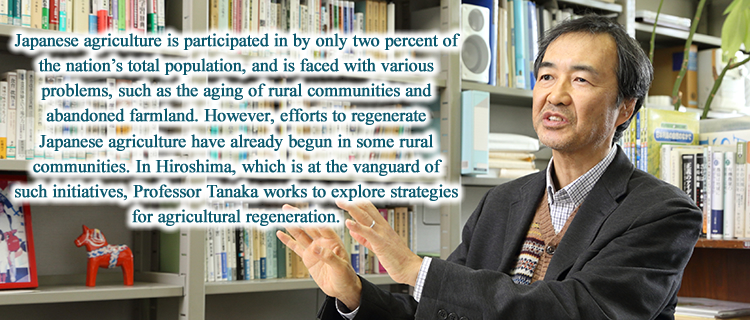 |
| |
|
Studying agriculture in Hiroshima Prefecture, which is taking the lead in
efforts to regenerate Japanese agriculture
|
| |
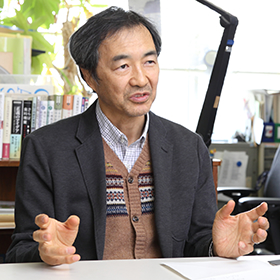 |
|
Professor Tanaka’s professional career as a researcher may be
somewhat unusual. Originally his interest in consumer education led him to
research cooperative societies at the School of Education, Hokkaido
University. Next he worked as a full-time researcher at the Japan Life
Safety Research Center & CCW and at the Consumer Co-operative Institute
of Japan. He became known as a pioneering researcher of cooperative
societies. Subsequently he moved to Hiroshima University. Since then he has
studied agriculture, in the course of which his subject of study has shifted
to Japan Agricultural Cooperatives, or JA.
“Now I am working on research concerning agriculture in Hiroshima
Prefecture. Hiroshima is a so-called disadvantaged prefecture, and is
considered to be at ‘the leading edge of the decline of Japanese
agriculture’,” says Professor Tanaka. Agricultural communities in Hiroshima
Prefecture are aging faster than in any other prefecture in Japan, and its
agricultural population keeps on decreasing. Under such circumstances,
nevertheless, various initiatives are under way, so that expectations are
growing that, conversely, Hiroshima Prefecture may be becoming a
“frontrunner for the regeneration of Japanese agriculture.” |
|
| |
According to the professor, the key to the regeneration of
Japanese agriculture lies in a new style of practice called “community
farming.” He says that “To be more accurate, this is what is referred to as
an ‘agricultural production corporation.’ At present, Hiroshima Prefecture
has more than 200 agricultural production corporations, which is the largest
number in Japan.”
Professor Tanaka explains the reason why this change occurred, saying that
“When it comes to cooperative society regarding agriculture, many Japanese
people think of the Japan Agricultural Cooperatives. However, more and more
Agricultural Cooperatives have been merged into larger-scale entities.
Agricultural Cooperatives in Shimane Prefecture will be integrated into a
single entity. In Hiroshima Prefecture, currently there are 13 JA
cooperatives. Europe is far ahead of Japan. European agricultural
cooperatives have been merged and become incorporated as companies,
transcending national boundaries. In Europe, the process of incorporation
has progressed, because farmers require agricultural cooperatives to be more
profitable, as farmers became larger and assume the characteristic of
enterprises. In contrast, in Japan, many farmers have side jobs, and
generally their agricultural operations are small in scale, with the aging
of rural population accelerating. In addition, agricultural cooperatives in
Japan are mainly focused on providing credit, which is no longer required by
elderly farmers. Against such a backdrop, new forms of cooperative
organizations have come into existence.” |
|
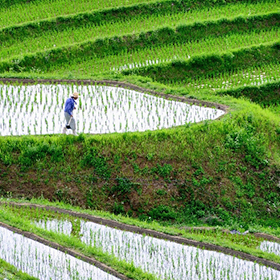 |
|
| |
|
Considering a better form of agriculture by reviewing the present situation
of community farming
|
| |
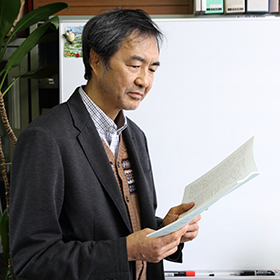 |
|
He states that for Japanese farmers, “community farming” is a
more familiar style of cooperative organization that replaces the
conventional agricultural cooperatives. Behind this are truly serious
issues.
“Farmers in Japan are in possession of farmland that has been handed down
from generation to generation, and they are reluctant to sell it to others.
However, it is difficult to maintain the farmland if current conditions
remain unchanged. Also they have no successors. One of the methods to wisely
resolve these issues is ‘organizing an agricultural network,’ in other
words, establishing agricultural production corporations,” explains
Professor Tanaka.
The mechanism is as follows:
Farmers continue to hold the farmland ownership rights, but entrust only the
right of land-use to an agricultural production corporation. Then the
cooperation can save costs, since it can collectively manage several tens of
hectares of land. On the other hand, farmers are very grateful that the
corporation collectively undertakes rice paddy-related work, from rice
planting to harvesting. |
|
| |
Notably, many farmers in Hiroshima Prefecture do not want to be in a state
that they just own their farmland but engage in no agricultural practices by
fully entrusting faming work to the corporations. Rather they seek to
participate as much as possible in the management of their farmland,
including paddy water management and vegetable cultivation in plowed fields,
as part of their efforts to make agriculture viable in the entire local
community.
Professor Tanaka added that “The operators’ group of the corporation is in
charge of operating farm machinery, while farmers try to remain involved in
agriculture as much as possible they can. This is a model for the current
agricultural production corporations. I am committed to this research while
envisioning that a new Japanese agriculture is being developed in this
prefecture that is at the vanguard of the nation’s agriculture.” |
|
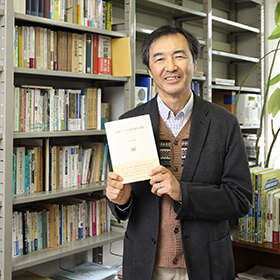 |
|
| |
|
Looking at the future of Japanese agriculture through comparison with
Europe
|
| |
|
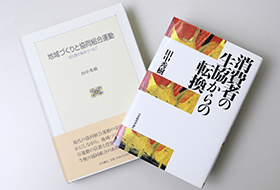
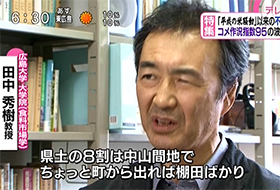
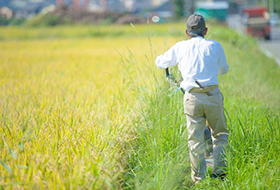
|
|
Technically speaking, the farming populations should be
differently named according to the operation scale. They are “farmers (who
manage large-scale farms)” more often in the United States, whereas
“peasantry (small farmers)” are found more frequently in Japan and Europe.
Professor Tanaka points out that when considering the agriculture of Japan,
comparing it with that of European countries to identify the differences
will help us to understand what we cannot understand when looking at only
Japan.
He analyzes saying “In Japan, at least water-rights communities, i.e.,
villages are maintained even now. However, in Europe, old village
communities were broken up in the modern period. For this reason,
agricultural operations could be individually completed and could grow
larger on an individual basis, so that a considerable number of peasants
effectively became farmers. In Japan, the peasantry is maintained somehow or
other, although becoming partly collapsed. Accordingly, there are
differences in the cooperative organizations of the farming populations
between Japan and European countries.” The professor intends to continue
various comparative studies so as to consider the future of Japanese
farmers.
Recently agricultural production corporations in Japan have been
enthusiastic about not only agriculture but also other businesses, and
making regional contributions by such means as providing shuttle-bus
services, setting up direct sales stores, and running supermarkets and gas
stations. To our great surprise, these activities have resulted in the
creation of new jobs and employment opportunities, thereby
retaining/attracting more young people in/to the local communities,
according to the professor.
Professor Tanaka stated that community farming is very interesting in that
it has organized networks of the farming population, while keeping them
engaged in agricultural practices. I consider it significantly important
that farmers find such solutions by themselves.” He added with a smile that
“It is intriguing to observe diversity in the forms of agricultural
production corporations in respective communities. In the future, I wish to
further expand this research, from the analysis of the present situation to
the prediction of the future direction of farmers. I would be very happy if
our research findings could be of help in shaping a better future for
agriculture.”
Higashi-Hiroshima City, where Hiroshima University is located, has the
largest agricultural production corporation in the prefecture. The
corporation was established by a former agricultural extension worker in
Hiroshima Prefecture who earned a master’s degree in Professor Tanaka’s
laboratory. Moreover, in Higashi-Hiroshima City, activities have been
vigorously under way to form associations of agricultural production
corporations, an example of which is Farm Support Higashi-Hiroshima. These
activities attempt to encourage several corporations to fund and jointly
establish another new corporation, in which agricultural machines will be
concentrated to achieve even higher efficiency. These machines are used in
turn by the participating corporations.
Professor Tanaka concludes that “I feel extremely grateful that I can
witness these examples around us. Whenever I examine the present situation
in person, I can well understand that all participants are truly
enthusiastic and devising various ideas. By making detailed observations of
their practical activities, we will further push forward with research as to
“organizing an agricultural network.” |
|
| |
| Hideki Tanaka |
Professor
Laboratory of Agricultural Marketing
April 1, 1988 - September 30, 1989 Full-time Researcher, Japan Consumer Research
Institute
October 1, 1989 - March 31, 1990 Full-time Researcher, Consumer Co-operative Institute
of Japan
April 1, 1990 - October 15, 1992 Research Assistant, School of Applied Biological
Science, Hiroshima University
October 16, 1992 - March 31, 2000 Assistant Professor, School of Applied Biological
Science, Hiroshima University
April 1, 1995 - March 31, 1996 Visiting Research Fellow, Swedish University of
Agricultural Sciences (Sweden)
April 1, 2000 - present Professor, School of Applied Biological Science, Hiroshima
University
Posted on Apr 3, 2015
|
| |









